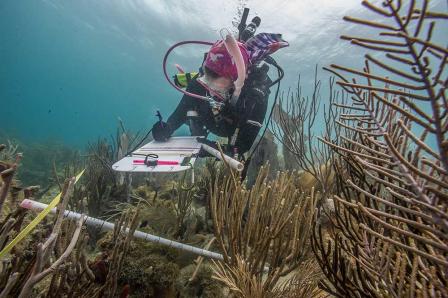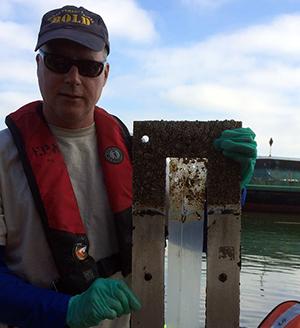Diving Case Studies
Learn more about some of our diving studies and investigations below.

Coral Reef Survey
St. John, Caribbean Sea
Each year EPA divers assist with the National Oceanic and Atmospheric Association’s (NOAA) annual National Coral Reef Monitoring Survey. These monitoring assessments focus on fish and coral diversity and abundance, and track shifts in "hard bottom" substrate.
Case study: Coral reef survey in the U.S. Virgin Islands
Ocean Acidification
Oceans have a critical role in protecting the earth, but they are threatened by greenhouse gas emissions such as carbon dioxide. Some of the carbon dioxide emitted into the atmosphere eventually mixes with seawater and forms acid. This process over time has made ocean water more acidic.
EPA is collecting ocean acidification data in order to better understand the problem and to help protect human health and the environment. Watch this video to learn more about EPA's work on ocean acidification.
Video: Ocean Acidification - EPA scientists help explain the complex issue of ocean acidification, featuring video and data collected by EPA divers.
Wyckoff Eagle-Harbor Cleanup
Bainbridge Island, Washington
Our divers have been supporting cleanup activities at the Wyckoff-Eagle Harbor Superfund Site since the early 1980’s. Work has included sediment sampling, monitoring eelgrass beds, various surveys, and installing "no anchor buoys" to protect the protective "cap" installed on the seafloor.
Video: Wyckoff-Eagle Harbor - Check out the stunning underwater footage of tar pools on the seafloor at this Superfund cleanup in Bainbridge Island, Washington.
 EPA diver displays a passive sampler ready for the lab after spending months on the river bottom soaking up available PCBs.
EPA diver displays a passive sampler ready for the lab after spending months on the river bottom soaking up available PCBs.Passive Sampling for PCBs
Lower Duwamish River, Seattle, Washington
Our divers were asked to plan, deploy, and retrieve passive water sampling devices in the Lower Duwamish River to help demonstrate whether these devices could be useful in determining the bioavailability of PCBs on the river bottom in porewater and near-bottom river water.
